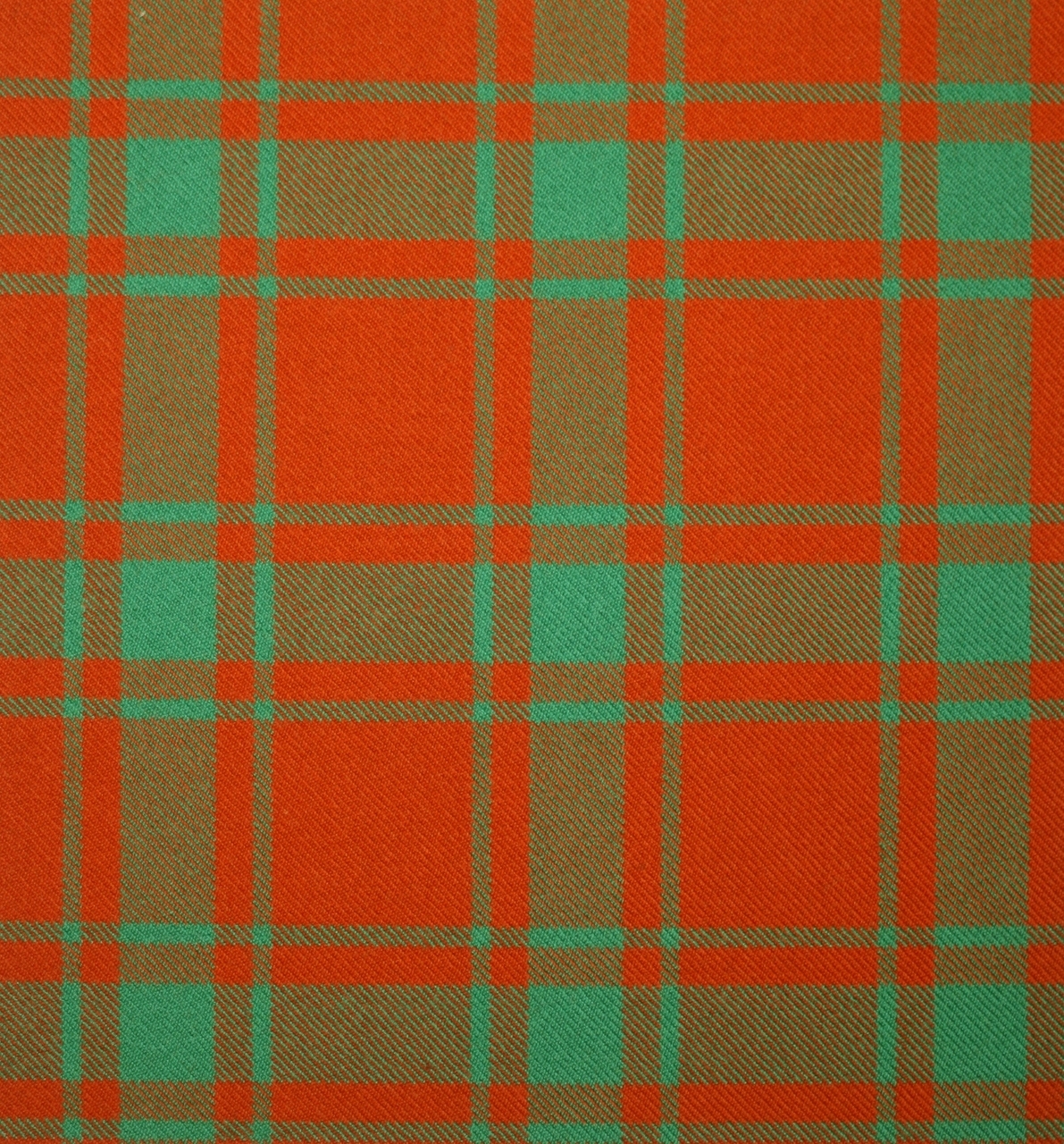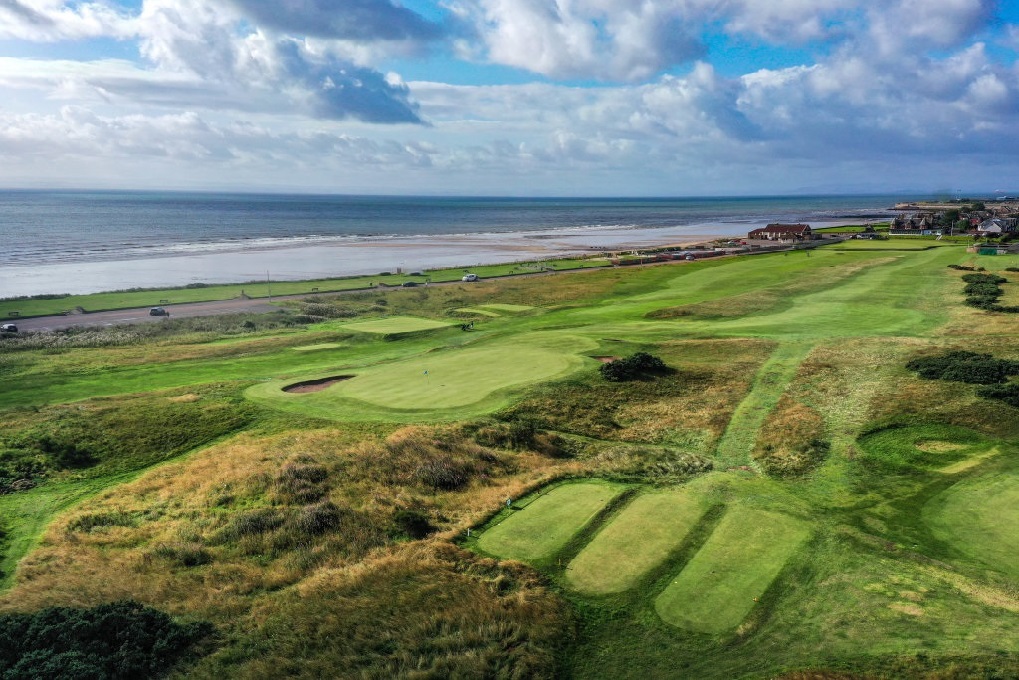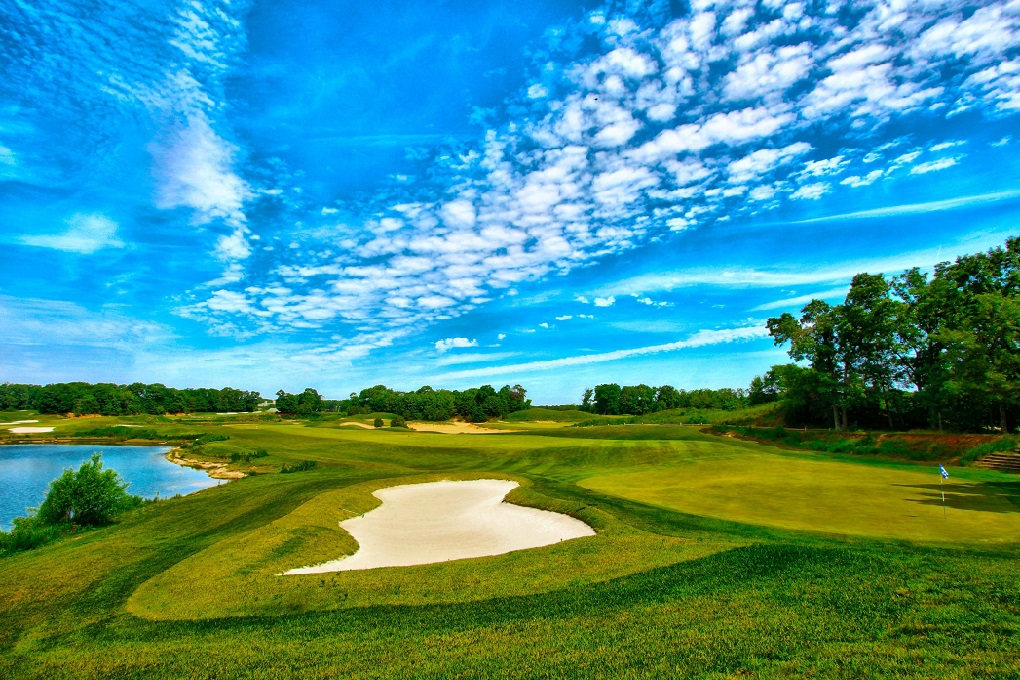Wee History of Scottish Golf
Golf as we know it today originated from a game played on the eastern coast of Scotland in the Kingdom of Fife during the 15th century. Players would hit a pebble around a natural course of sand dunes, rabbit runs and tracks using a stick or primitive club.
Some historians believe that Kolven from Holland and Chole from Belgium influenced the game. The latter was introduced into Scotland in 1421. However while these games and countless others are stick and ball games, they are missing that vital ingredient that is unique to golf – the hole. Whatever the argument, there can be no dispute that Scotland gave birth to the game we know as golf today.
During the mid-15th century, Scotland was preparing to defend itself against an English invasion. The population’s enthusiastic pursuit of golf and soccer to the neglect of military training (archery primarily) caused the Scottish parliament of King James II to ban both sports in 1457. The ban was reaffirmed in 1470 and 1491 although people largely ignored it. Only in 1502 with the Treaty of Glasgow was the ban lifted.
Golf’s status and popularity quickly spread throughout the 16th century due to its royal endorsement. King Charles I popularized the game in England and Mary Queen of Scots, who was French, introduced the game to France while she studied there. Indeed, the term ‘caddie stems from the name given to her helpers who were the French Military, known in France as cadets.
The premier golf course of the time was Leith near Edinburgh. Indeed, King Charles I was on the course when given the news of the Irish rebellion of 1641. Leith was also the scene of the first international golf match in 1682 when the Duke of York and George Patterson playing for Scotland beat two English noblemen.
Calum J. Craig, “The most important shot in golf is the next one.”
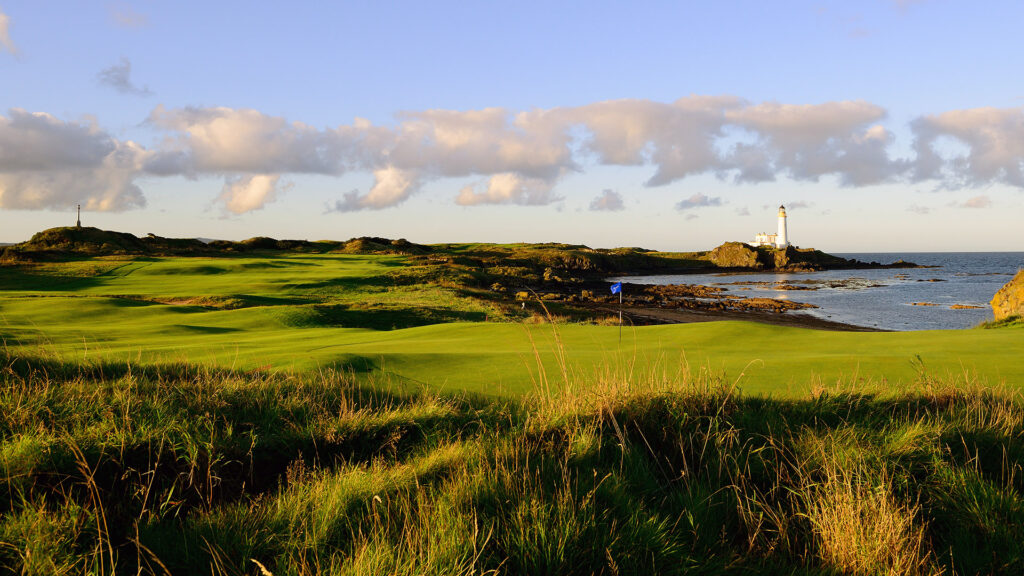
The Gentlemen Golfers of Leith (1744) was the first club and was formed to promote an annual competition with a silver golf club as the prize. Duncan Forbes drafted the club’s rules, which were:
1.You must tee your ball within one club’s length of the hole.
2.Your tee must be on the ground.
3.You are not to change the ball which you strike off the tee
4.You are not to remove stones, bones or any break club for the sake of playing your ball, except on the fair green, and that only within a club’s length of your ball.
5.If your ball comes among water, or any watery filth, you are at liberty to take out your ball and bringing it behind the hazard and teeing it, you may play it with any club and allow your adversary a stroke for so getting out your ball.
6.If your balls be found anywhere touching one another you are to lift the first ball till you play the last.
7.At holeing you are to play your ball honestly for the hole, and not to play upon your adversary’s ball, not lying in your way to the hole.
8.If you should lose your ball, by its being taken up, or any other way, you are to go back to the spot where you struck last and drop another ball and allow your adversary a stroke for the misfortune.
9.No man at holeing his ball is to be allowed to mark his way to the hold with his club or anything else.
10.If a ball be stopped by any person, horse or dog, or anything else, the ball so stopped must be played where it lies.
11.If you draw your club in order to strike and proceed so far in the stroke as to be bringing down your club; if then your club shall break in any way, it is to be accounted a stroke.
12.He who whose ball lies farthest from the hole is obliged to play first.
13.Neither trench, ditch or dyke made for the preservation of the links, nor the Scholar’s Holes or the soldier’s lines shall be accounted a hazard but the ball is to be taken out, teed and played with any iron club.
The club was later renamed the Honorable Company of Edinburgh Golfers with a clubhouse erected in 1768 (moved to Musselburgh, Lothian in 1836).
The first reference to golf at the historic town of St Andrews was in 1552. The clergy allowed public access to the links a year later. In 1754 the St Andrews Society of Golfers was formed to compete in its own annual competition using Leith’s rules. Stroke play was introduced in 1759 and in 1764, the 18-hole course was constructed which has of course become a de-facto standard. The first women’s golf club in the world was formed there in 1895. King William honored the club with the title ‘Royal & Ancient’ in 1834 and the new famous clubhouse was erected in 1854. The Royal and Ancient Golf Club of St Andrews (R&A) became the premier golf club because of its fine course, the publication of rules, it’s royal patronage and its promotion of the game as a proper sport.
Of course, by this time golfers were using proper clubs and balls. Club heads were made from beech or the wood of fruit trees such as apple. Some club heads were made from hand-forged iron. Shafts were usually ash or hazel. Balls were made from tightly compressed feathers wrapped in a stitched horse hide sphere. The sport was somewhat exclusive due to the expense of the handcrafted equipment. After 1826, persimmon and hickory were imported from the USA to make club heads and shafts respectively. Today these antiques are highly prized by collectors.
The British Empire was at its pinnacle during the 19th century. Indeed, the phrase ‘the sun never sets on the empire’ was coined to reflect Britain’s world-wide influence. Most of the early golf clubs outside the British Isles and America were formed throughout the Commonwealth.
The first golf club formed outside Scotland was Royal Blackheath (near London) in 1766. However, golf is believed to have been played there since 1608. The first golf club outside Britain was the Bangalore, India (1820). Others were the Royal Calcutta (1829), Royal Bombay (1842), Royal Curragh, Ireland (1856), the Pau, France (1856), the Adelaide (1870), Royal Montreal (1873), Cape Town (1885), St Andrew’s of New York (1888) and Royal Hong Kong (1889). Some say that the South Carolina Golf Club, Charlestown of 1786 precedes all of these.
The Victorian Industrial Revolution brought with it many social and economic changes. The growth of the railways gave birth to the mass tourism industry. For the first time, ordinary people could explore the country as day-trippers or weekend visitors. Golf clubs popped up all over the country and people could enjoy the challenge of playing a different one every weekend.
Hitherto golf equipment was handcrafted and therefore expensive. Golf was therefore the preserve of the affluent. Once metal club heads and shafts and gutta percha balls (1848) began rolling off the production lines, the average person was able to afford to play golf. Both factors directly contributed to the phenomenal growth of golf.
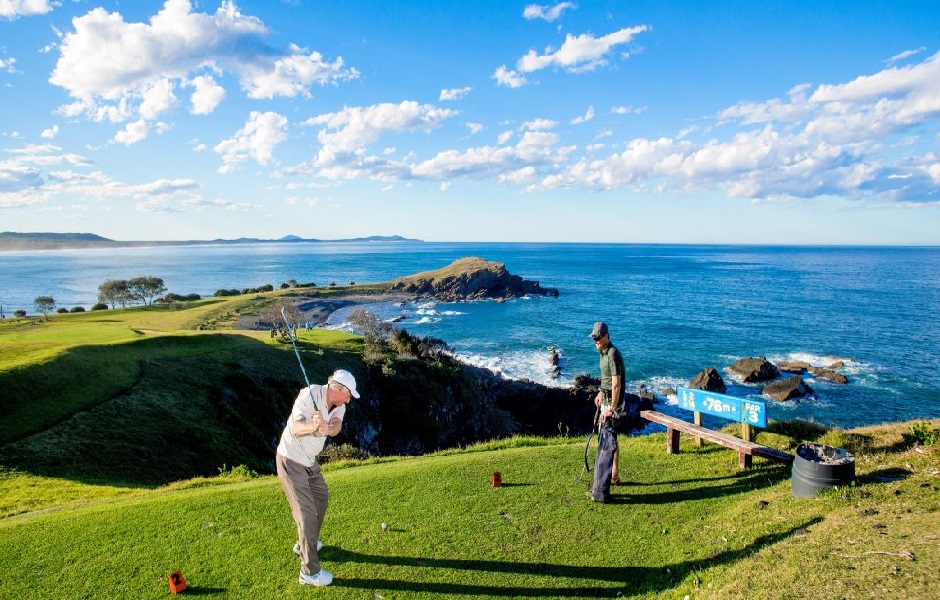
The Prestwick Golf Club was formed in 1851. The precursor to the British Open, the first major national championship, was played there for the first time in 1860 with Willie Park as winner. The legend of Old Tom Morris was born when he won the event in 1862, 1864 and 1867. However, his son, Young Tom Morris, was the first great champion winning the event a record four consecutive times from 1869. Other illustrious winners were JH Taylor in 1894 and Harry Vardon in 1896. Together with James Braid, these three men were known as the Great Triumvirate.
Besides the few sponsored events such as the British Open, most golf professionals made a living from competitions by betting against their opponent. Professionals also earned a living from tuition, ball and club making and caddying.
The growth of golf as an organized competitive sport in the United Kingdom was paralleled abroad in India and the USA. Gate receipts were used as prize money for the first time in 1892 in Cambridge, England. The first international golf tournament was the Amateur Golf Championship of India and the East in 1893.
In 1894, the United States Golf Association (USGA) was established to regulate the game in the United States and Mexico. Besides rules it manages the handicapping system and conducts research into grass. The US Open US Ladies Amateur Open were inaugurated in 1895.
By 1900 there were more than 1000 golf clubs in the USA. Chicago was the first to have 18 holes. Significantly American golf courses were usually specifically landscaped parklands unlike those in the United Kingdom, which were typically links courses.
The game attracted the attention of the media and business sponsorship which raised its profile enormously. In 1897 the first monthly magazine, Golf, was published in the USA. The USA became the center of the professional game due to the proliferation of commercially sponsored competitions. However, the prestigious events were still those hosted in the United Kingdom. Interestingly, it was the amateurs rather than professionals, which were exalted by the public.
Golf was confirmed as a global sport when it was made an Olympic sport in 1900.
The dawn of the 20th century brought with it several technological innovations. The first was the Haskell one-piece rubber cored ball of 1900, which practically guaranteed an extra 20 yards. Grooved-faced irons were introduced in 1902. In 1905 William Taylor invented the first dimpled ball. Arthur Knight introduced steel-shafted clubs in 1910 though hickory was widely used for another 25 years. Within the space of a decade, golfers could hit further and more accurately than ever before using equipment which was relatively cheaply mass-produced.
The Professional Golfers Association (PGA) of America was formed in 1916 and initially consisted of a winter calendar. However, by 1944 the tour was played throughout the year and consisted of 22 events.
In 1921, the R&A imposed a limit on the size and weight of the golf ball which began a 30 year split between the European and Commonwealth game and the US game (regulated by the USGA). Most of the differences were resolved in 1951 when both parties agreed to a common set of rules. However, the golf ball issue was not settled until 1988! Today golf worldwide is regulated jointly by the R&A and the USGA. They hold a summit every four years where they agree alterations to the published official rules of golf.
The rift was accompanied by the introduction of the Ryder Cup matches in 1927. Initially the Europeans were represented by golfers from Britain and Ireland. The Americans with their wealth of talent won every event between 1935 and 1985 except for 1957. Only since 1979, have players outside the British Isles been allowed to play for the European Ryder Cup team and the competition become truly competitive.
Perhaps the greatest player of the pre-war period was the American born Bobby Jones. Amongst his many successes was the original Grand Slam; he won US and British Amateurs and the US and British Opens in 1931. Other luminaries were Sir Henry Cotton who won a third consecutive British Open in 1936 and Walter Hagen who won four British Opens. Hagen was noted for his flamboyant behavior which included hiring a Rolls Royce as a changing room and giving his prize money as winner of the British Open to his caddie.
Great women golfers of the time were Joyce Wethered who won her fifth consecutive English Ladies Championship in 1924 and Glenna Collett Vare who won her sixth US Women’s Amateur in 1935.
In 1933, Augusta opened. The first US Masters was played there in 1934 and won by Horton Smith. Gary Player from South Africa broke the American monopoly of the event in 1961. Several British players have won since the 1980s.
When World War II broke out in 1939, competition in England was largely suspended. The War Ministry diverted all rubber and metal resources into the war effort and drafted men of fighting age into the services. The Americans followed suite when they entered the war in 1942.
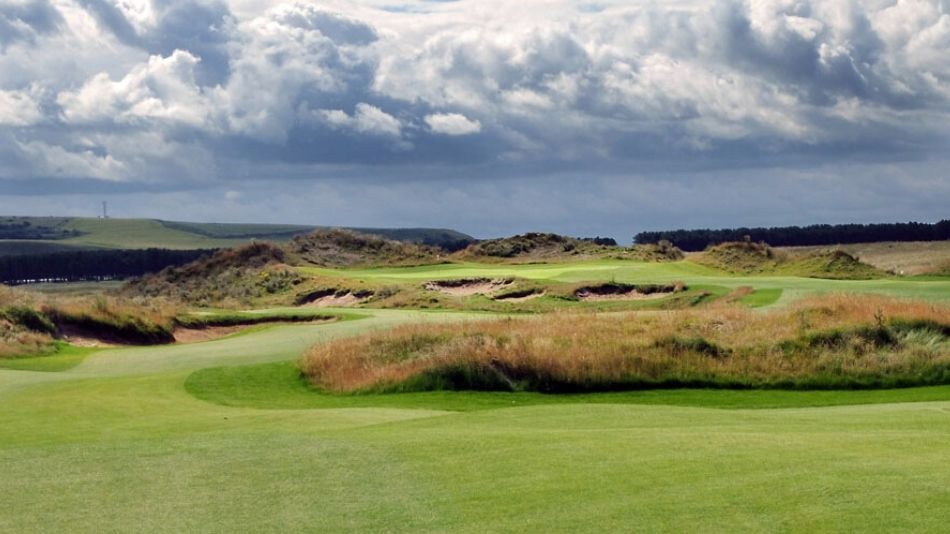
The Ladies PGA was formed in 1951 (European version in 1988) and replaced the Women’s Professional Golf Association. The first Women’s Open was held in 1946 and won by Patty Berg.
Perhaps the greatest lady golfer of the time was Mildred ‘Babe’ Didrikson Zaharias. She won the US Women’s Amateur in 1946, the Women’s British Amateur in 1947 and the US Women’s Open in 1948, 1950 and 1954. If that wasn’t enough, she only took up golf after retiring from an athletics career which included three Olympic gold medals and world records.
After the war, most professionals, with the exception of the great Ben Hogan, chose to compete exclusively in America because of the sizeable prize money on offer. In recognition of this fact, the R&A increased the prize money for the British Open which helped to bring the top players back to Europe.
The 1960s brought with it something special in the guise of Arnold Palmer, Jack Nicklaus and Gary Player – the Modern Triumvirate. They dominated the game into 1970s winning nearly every major event around the world and competing in the prestigious international matches. Nicklaus for example, can claim an unbeaten record of four US Open, six US Masters titles and five US PGA Championships.
While the pre-war period might be considered as the age of women’s liberation both socially and golf wise, the 1960s brought with it the struggle against bigotry. In 1961, the PGA withdrew its ‘whites-only’ rule from its constitution. Charlie Sifford became the first black golfer to contest a PGA event and Lee Elder the first to contest the Masters in 1975. However even in 1990, when the PGA introduced further measures to end racial discrimination, more clubs notably, Cypress Point, withdrew from the Tour. Perhaps Tiger Woods’ outstanding victory in the 1997 US Master has finally changed attitudes.
The most famous golf shot ever must surely be Alan Shephard hitting a ball on the moon in 1971, watched by an audience of millions around the world. Does this make golf the first sport in space? The club he used can be viewed in USGA museum.
The Americans and South African Gary Player dominated world golf during the 1970s. Only when Severiano Ballesteros won the British Open in 1979 and the US Masters in 1980, did the pendulum swing back in favor of the Europeans. Sandy Lyle, Nick Faldo, and Colin Montgomerie re-established Britain’s competitive presence in world golf.
Individual success was matched with team success when the Europeans, captained by Tony Jacklin, won the Ryder Cup in 1985 – ending a 28-year American dominance. The Solheim Cup, the women’s version of the Ryder Cup, was launched in 1990. By 1991, Europeans were at the top of the Sony World Rankings with Ian Woosnam hitting the top spot.
Article Credit: http://www.golfeurope.com/almanac/history/history1.htm
Photo Credit – Your Golf Travel
Photo Credit – Run Golf Club
Photo Credit – CNN
Photo Credit – Golfbreaks.com
Photo Credit – Visit NSW
Photo Credit – Golf Course Architecture

